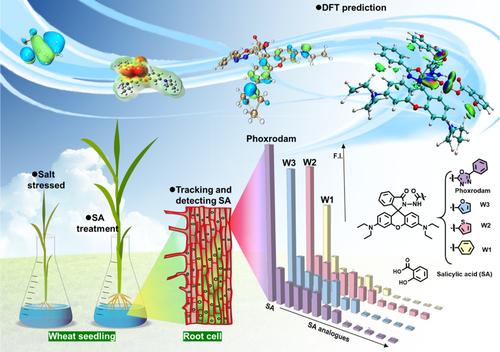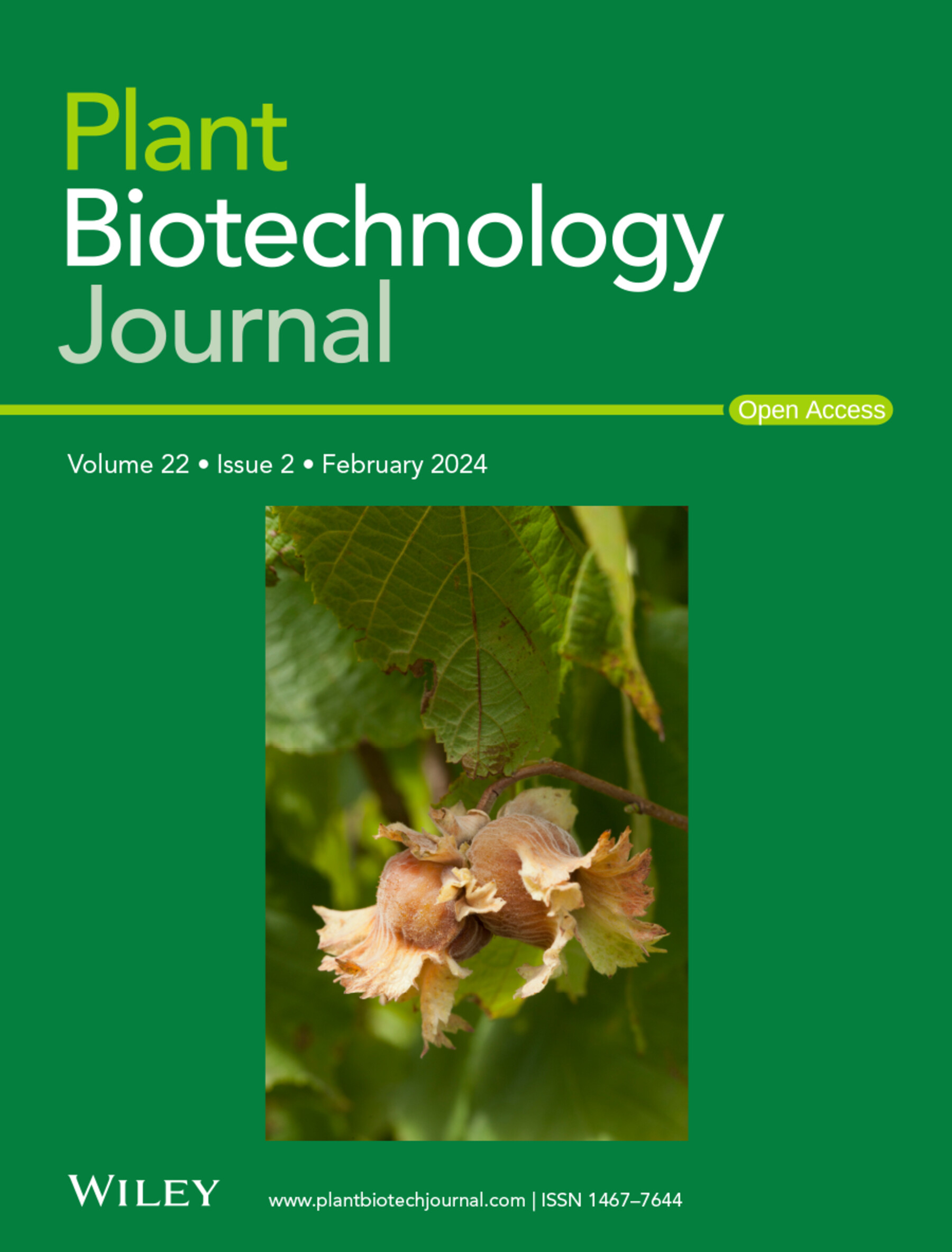The rational design of a Rhodamine fluorescent probe enables the selective detection and bioimaging of salicylic acid in plants under abiotic stress
IF 10.1
1区 生物学
Q1 BIOTECHNOLOGY & APPLIED MICROBIOLOGY
引用次数: 0
Abstract
SummaryAbiotic stress severely hinders plant growth and development, resulting in a considerable reduction in crop yields. Salicylic acid (SA) serves as a central signal mediating abiotic stress responses in plants. Real‐time fluorescence tracking using specific probes can enhance our understanding of the SA‐triggered modulation underlying these events. However, in complicated living plant microenvironments, selective recognition and bioimaging of SA is a great challenge for scientists due to the severe background interference and SA analogues. Herein, an efficient fluorescence probing technology employing a highly selective rhodamine probe—phoxrodam was developed, which realizes the precise bioimaging of SA in salt‐stressed plant seedlings. Experimental findings reveal that phoxrodam demonstrates exceptional selectivity (fluorescence intensity:

求助全文
约1分钟内获得全文
求助全文
来源期刊

Plant Biotechnology Journal
生物-生物工程与应用微生物
CiteScore
20.50
自引率
2.90%
发文量
201
审稿时长
1 months
期刊介绍:
Plant Biotechnology Journal aspires to publish original research and insightful reviews of high impact, authored by prominent researchers in applied plant science. The journal places a special emphasis on molecular plant sciences and their practical applications through plant biotechnology. Our goal is to establish a platform for showcasing significant advances in the field, encompassing curiosity-driven studies with potential applications, strategic research in plant biotechnology, scientific analysis of crucial issues for the beneficial utilization of plant sciences, and assessments of the performance of plant biotechnology products in practical applications.
 求助内容:
求助内容: 应助结果提醒方式:
应助结果提醒方式:


